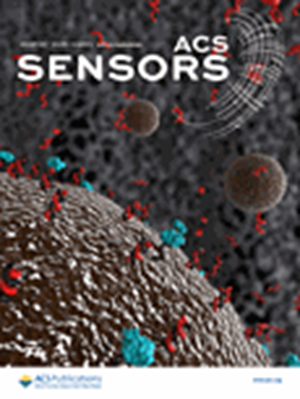Next-Generation Wearable/Implanted Sensors Based on Fiber Optic and Its Application: From in Vitro to in Vivo.
IF 8.2
1区 化学
Q1 CHEMISTRY, ANALYTICAL
引用次数: 0
Abstract
Wearable sensors are significant for health status, diagnosing diseases, and adjusting postoperative interventions to monitor the physiological information on humans continuously. The first generation of wearable sensors has gained rapid growth in medical health for monitoring physical parameters. Recently, emerging fiber optics (FOs) with small diameters have been attached to desired locations of the human epidermis or fabrics for monitoring physiological change activity. Because of its strong soft tissue affinity and excellent biocompatibility, FO has been injected into human skin, blood vessels, and the brain for sensing of biological parameters. The detection of FO has been extended, ranging from physical parameters to chemical and biological parameters. Also, the application of FO has shifted from wearable sensors in vitro to implanted sensors in vivo. Thus, FO is expected to launch a milestone contribution to next-generation wearable/implanted sensors. Based on the success, this review focuses on wearable and implantable FO-based sensors. The three main design strategies of single point, distributed, and FO array were profiled. The significant application of the detection of the physical, chemical, and biological parameters was discussed. The opportunities and challenges of wearable/implantable FO-based sensors were highlighted to promote their development for commercial applications.基于光纤的下一代可穿戴/植入式传感器及其应用:从体外到体内。
可穿戴传感器对健康状况、疾病诊断和术后干预调整具有重要意义,可以持续监测人体的生理信息。第一代可穿戴传感器用于监测身体参数,在医疗健康领域得到了快速发展。近年来,新兴的小直径光纤(FOs)已被应用于人体表皮或织物的特定位置,用于监测生理变化活动。由于其强大的软组织亲和性和优异的生物相容性,鱼油已被注射到人体皮肤、血管和大脑中,用于感知生物参数。FO的检测已经从物理参数扩展到化学和生物参数。此外,FO的应用也从体外可穿戴传感器转向体内植入式传感器。因此,FO有望在下一代可穿戴/植入传感器领域做出里程碑式的贡献。在此基础上,本文综述了可穿戴和植入式fo传感器。介绍了单点、分布式和FO阵列三种主要的设计策略。讨论了物理、化学和生物参数检测的重要应用。强调了可穿戴/植入式fo传感器的机遇和挑战,以促进其商业应用的发展。
本文章由计算机程序翻译,如有差异,请以英文原文为准。
求助全文
约1分钟内获得全文
求助全文
来源期刊

ACS Sensors
Chemical Engineering-Bioengineering
CiteScore
14.50
自引率
3.40%
发文量
372
期刊介绍:
ACS Sensors is a peer-reviewed research journal that focuses on the dissemination of new and original knowledge in the field of sensor science, particularly those that selectively sense chemical or biological species or processes. The journal covers a broad range of topics, including but not limited to biosensors, chemical sensors, gas sensors, intracellular sensors, single molecule sensors, cell chips, and microfluidic devices. It aims to publish articles that address conceptual advances in sensing technology applicable to various types of analytes or application papers that report on the use of existing sensing concepts in new ways or for new analytes.
 求助内容:
求助内容: 应助结果提醒方式:
应助结果提醒方式:


